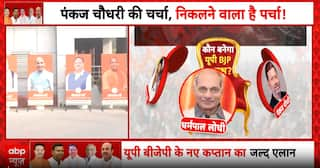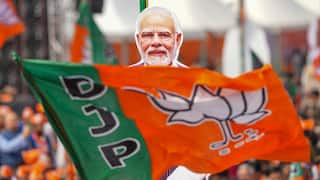Explorer
Remove 28% tax slab to simplify GST, says CEA Arvind Subramanian
Outgoing Chief Economic Advisor Arvind Subramanian argued that GST needed to be less complicated. There is a need to rationalise GST rates but at the first instance the 28 percent should go, he added.

Outgoing Chief Economic Advisor Arvind Subramanian (PTI)
New Delhi: In order to simplify the Goods and Services Tax (GST) regime further, outgoing Chief Economic Advisor Arvind Subramanian on Wednesday advised to remove the ideal system of 28 percent GST rate at the earliest. He said removing the highest 28 percent slab and a uniform rate of cess should be the first step in the direction to simplify GST. While speaking to a leading national daily, he argued that GST needed to be less complicated. There is a need to rationalise GST rates but at the first instance the 28 percent should go, he added. He further stressed on the fact that the cesses may have to remain but there should be just one rate on cesses. According to the outgoing Chief Economic Advisor the cesses may have to be there because we are going to have higher rates for some products but there shouldn’t be multiple rates even here. According to him, the cess had to be retained, having just one rate was better instead of the multiple rates right now. Further quoting his report, Subramanian said they had called for one 18 percent rate and then 40 percent rate. Cesses are a different way of implementing the 40 percent rate, he added. Subramanian had headed a committee and submitted the report on the “Revenue Neutral Rate and Structure of Rates for the GST”. In his report, he had suggested a preferred revenue neutral rate for goods of 15 percent, with two, four, and six percent rate for precious metals, a low rate of 12 percent. Along with this, he had also suggested a standard rate of 16.9, 17.3 and 17.7 percent and one 40 percent rate for demerit goods. GST is an indirect tax levied in the country on the sale of goods and services. Presently, there are multiple tax slabs in GST regime with five broad categories of zero, 5 percent, 12 percent, 18 percent and 28 percent. There is a special rate of 0.25% on rough precious and semi-precious stones and 3% on gold. The tax regime came into effect from July 1, 2017 through the implementation of One Hundred and First Amendment of the Constitution of India by the Modi government. The tax replaced existing multiple cascading taxes levied by the central and state governments. Subramanian will be leaving the Finance Ministry soon though he had not yet finalised the date of his last day in office. Citing “personal reasons” for leaving the department, he announced his exit from the department eleven months before the end of his term in May 2019.
Follow Breaking News on ABP Live for more latest stories and trending topics. Watch breaking news and top headlines online on ABP News LIVE TV
Read more






































